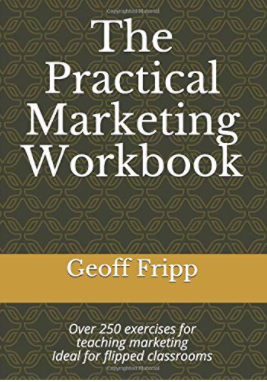
Introducing the Practical Marketing Workbook
As suggested by the title of the book, this workbook contains over 200 teaching exercises designed to make marketing “practical”.
It contains almost 250 student activities all designed in a worksheet form. This means that you can print or photocopy pages for students and use them in class as individual or group activities.
It is an ideal resource for flipped classroom and active learning environments. Each activity contains its own instructions and spaces for students to write their responses. The workbook takes many of the exercises on Great Ideas for Teaching Marketing and turns them into worksheet-based activities.
Provides variety and interest for students and appeals to student’s different learning styles. It has a mix of simple and more complex activities. All activities and exercises have been tried and tested in the classroom!
Key Features of the Practical Marketing Workbook
- Contains over 250 activities – all with simple instructions
- Quick and easy to use
- Ideal for flipped classroom environments
- The ideal resource for teaching ‘Marketing Principles’
- Also a great resource for ‘Consumer Behavior’, ‘Promotions Management’ and ‘Marketing Strategy’
- Provides variety and interest for students
- Appeals to student’s different learning styles
- Uses a mix of simple and more complex activities
- Adaptable for both undergraduate and masters programs
- Also suitable for use with senior high school students
- Flexible for 1-2 hour tutorial sessions, or for longer lectures
- Reinforces theory and enables understanding and application
- All activities and exercises tried and tested in the classroom
How to Get the Practical Marketing Workbook
Please click on the Amazon book image, which take you to Amazon where you can check out more details and even view some of the sample pages.
Chapters of the Marketing Workbook
- Introductory marketing concepts
- Marketing strategy and plans
- The marketing environment
- Marketing research and information
- Consumer behavior
- Segmentation, targeting and positioning
- Customer relationship marketing (CRM)
- New product development
- Products and brands
- Pricing
- Place and logistics
- Integrated marketing communications